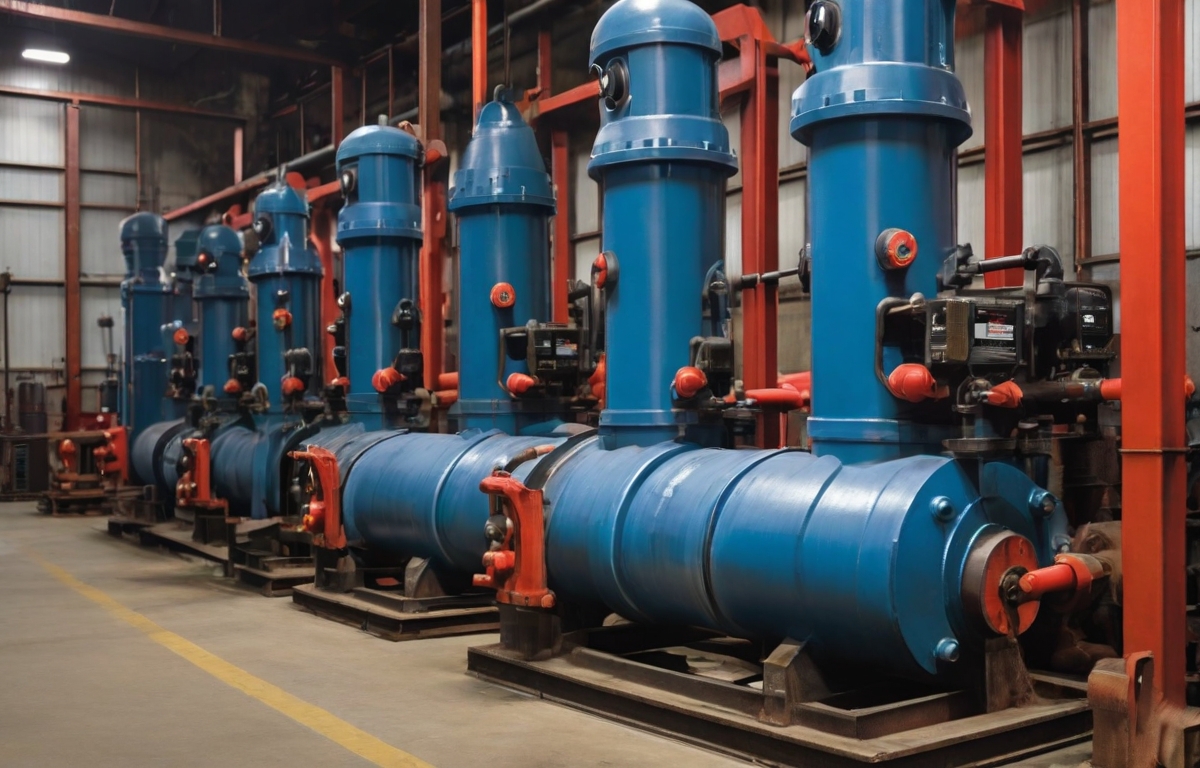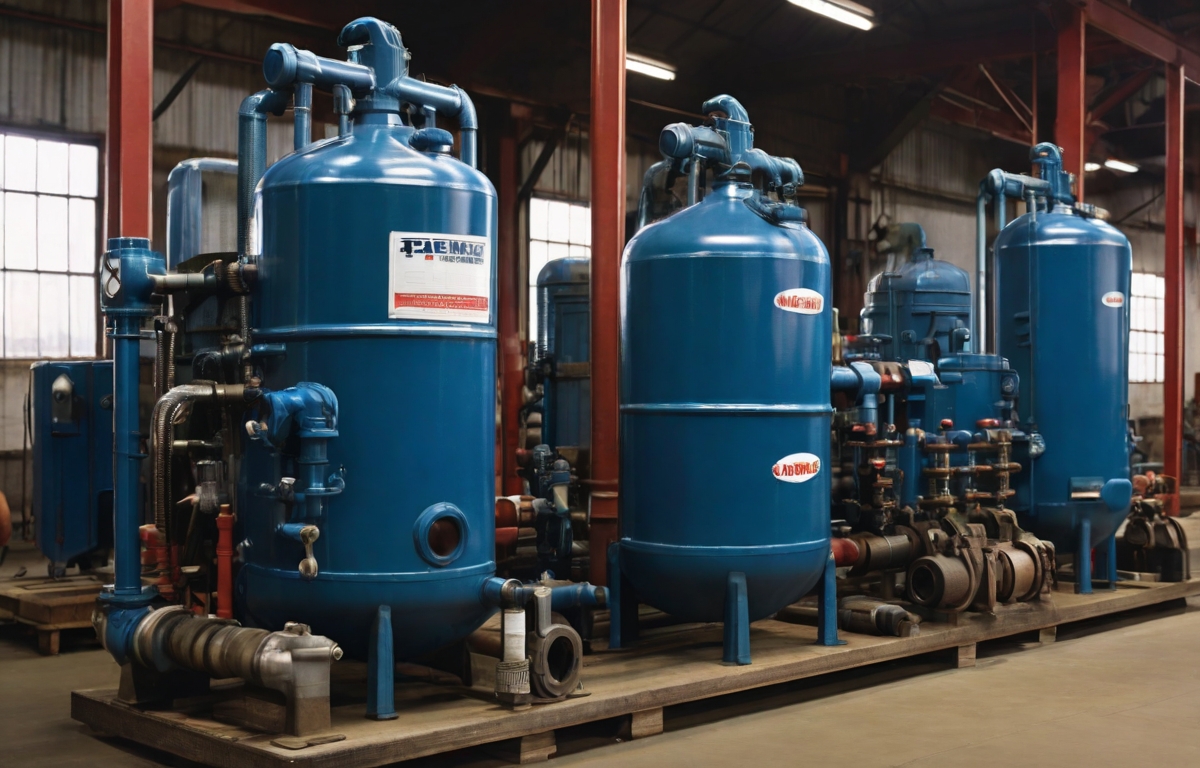Pumping applications are critical to a range of industries, from agriculture to manufacturing. Industrial pumps play a crucial role in these applications, helping to move liquids, gases, and slurries through pipes and systems. Understanding the different types of pumps, selecting the right pump for the application, and implementing proper maintenance and design practices are essential for optimal performance and efficiency.

Understanding Pump Types for Different Applications
Pumps are an essential component of many industrial applications, but not all pumps are created equal. There are various types of pumps that are designed for specific applications. The choice of a pump type depends on many factors, including the fluid properties, flow rate, system pressure and more. In this section, we will explore the most common pump types and their functions in different pumping applications.
Centrifugal Pumps
A centrifugal pump is perhaps the most common type of pump used in industrial applications. These pumps use centrifugal force to impart kinetic energy to the fluid being pumped and convert it to pressure energy. The fluid enters through the center of the impeller, which throws it out towards the casing wall, where the fluid gains pressure and velocity. Centrifugal pumps are ideal for low viscosity fluids and applications with high flow rates, such as water treatment, chemical processing, and HVAC systems.
Positive Displacement Pumps
Positive displacement pumps are used to pump fluids with high viscosity or applications that require high pressure. These pumps work by trapping a specific amount of fluid and then forcing it into the discharge pipe. The most common types of positive displacement pumps are diaphragm pumps, piston pumps, and gear pumps. These pumps are ideal for applications that require precise flow rates, like food processing, oil and gas industry, and pharmaceutical manufacturing.
Other Specialized Pump Types
Some industrial applications require specialized pumps that can handle unique challenges in pumping, such as abrasive materials, high temperature, or high pressure. Some common types of specialized pumps include peristaltic pumps, gear pumps, mag-drive pumps, and air-operated double diaphragm pumps. It is important to understand the specific pump requirements of your application to ensure that the pump you choose can handle the challenges of the job.
Understanding the different types of pumps and their functions in different pumping applications is crucial for selecting the right pump for the job. Always consider the fluid properties, flow rate, pressure requirements, and other factors when choosing a pump type for your application. Taking these factors into account will help you choose the most efficient and effective pump for your needs, giving you optimal performance and cost savings in the long run.
Pump Selection Guide for Optimal Performance
When it comes to selecting a pump for a specific pumping application, there are several important factors to consider. First and foremost, the flow rate and pressure requirements of the application should be thoroughly evaluated to determine the appropriate pump type.
Another crucial factor in pump selection is ensuring material compatibility between the pump and the fluid being transported. This is particularly important for corrosive or abrasive fluids, as the wrong pump material can lead to damage and decreased efficiency.
The operating conditions of the pump, such as temperature and viscosity, should also be considered. Choosing a pump that is suitable for the specific operating conditions will help ensure optimal performance and reliability.
Other factors that may impact pump selection include the required pump size, the desired level of automation, and any specific industry regulations or standards that must be met.
Overall, selecting the right pump for a pumping application is crucial for achieving optimal performance and efficiency. By carefully considering factors such as flow rate, pressure requirements, material compatibility, and operating conditions, you can ensure that the pump you choose is best suited to the task at hand.
Enhancing Pump Efficiency and Performance
Improving the efficiency and performance of pumping systems is crucial for optimizing operations and reducing energy costs. Proper pump sizing and system design considerations are essential factors to ensure maximum performance. Implementing energy-saving strategies is another effective way to enhance pump efficiency and reduce overall energy consumption.
Proper Pump Sizing
Choosing the right pump size is crucial for system efficiency and performance. An undersized pump will consume more energy and reduce the life of the pump, while an oversized pump will lead to higher capital costs and higher energy bills. Therefore, it is essential to determine the required flow rate and discharge pressure when selecting a pump.
System Design Considerations
The overall design of the pumping system affects pump performance and energy efficiency. The layout of the piping system, the position of the pump, the use of valves, and the type of fittings all play important roles in optimizing system performance. Proper system design can minimize friction, reduce turbulence, and maintain a stable flow rate, which translates into improved pump efficiency and performance.
Energy-Saving Strategies
Implementing energy-saving strategies, such as variable frequency drives (VFDs), can help reduce energy consumption and enhance pump efficiency. VFDs allow pumps to run at variable speeds, which makes it possible to operate the system closer to the required flow rate and pressure, reducing energy consumption and extending the life of the pump. Another effective strategy is to optimize the pump impeller trimming, which can improve performance and reduce energy consumption.
Maintenance Tips for Reliable Pump Operation
In order to ensure reliable and long-lasting operation, proper pump maintenance is crucial for any pumping application. Regular maintenance tasks can help prevent unexpected downtime, costly repairs, and even system failures.

Routine Maintenance Tasks
Performing routine maintenance on your pump can help increase its lifespan and maintain optimal performance levels. Tasks such as checking the oil level, inspecting seals for wear and tear, and cleaning debris from the impeller can improve efficiency and prevent damage to the pump. It is also important to follow the manufacturer’s recommended maintenance schedule and keep detailed records of all maintenance tasks.
Troubleshooting Common Issues
Despite regular maintenance, pumps may encounter common issues such as leaks, low flow rates, or overheating. Troubleshooting these issues early on can prevent further damage to the pump and ensure uninterrupted operation. Some troubleshooting techniques include checking for loose fittings, inspecting suction and discharge valves, and monitoring system pressure. It is important to address any issues as soon as they arise to prevent further damage or system failures.
Regular Inspections
Regular inspections are important for detecting potential issues before they turn into major problems. Inspections can help identify worn components, leaks, and other issues that may affect pump performance. It is recommended to schedule regular inspections by a qualified technician to ensure that your pump is operating at peak performance and to address any issues in a timely manner.
By following these maintenance tips, you can ensure reliable and efficient pump operation, prolong the lifespan of your pump, and reduce the risk of unexpected downtime or costly repairs.
Installation and System Design Best Practices
Proper installation techniques and system design are crucial for the efficient and reliable operation of pumping systems. Before starting any pump installation, it’s essential to understand the pumping application and select the appropriate pump type based on the specific requirements.
When designing a system, consider the required flow rate, pressure, and head of the application. Additionally, the layout of the system should be optimized to ensure optimal operation and prevent any pressure drops or inefficiencies. Proper piping and fittings are also critical to ensure consistent flow and avoid leaks.
During installation, ensure that the pump is level and remains securely in place. The piping and fittings should also be secured and leak-free. Before startup, it’s important to prime the pump and test the system for any issues or leaks.
By following these installation and system design best practices, pumping applications can be optimized to ensure maximum efficiency and reliability.
Conclusion
In conclusion, pumping applications are critical to various industries, from agriculture to pharmaceuticals and everything in between. Understanding the needs of specific applications and selecting the appropriate pump are crucial for efficient and optimal performance. Regular maintenance, including routine inspections and troubleshooting, is also essential to ensure reliable operation and prevent costly downtime.
Proper installation and system design can also significantly impact the efficiency and effectiveness of pumping applications. It’s important to follow best practices, such as selecting the right piping and fittings and ensuring the layout of the system is optimal.
Overall, the success of pumping applications relies on a combination of factors, including pump selection, maintenance, and proper installation and design. By implementing the best practices discussed in this article, businesses can improve their pumping application performance and ultimately increase their bottom line.

